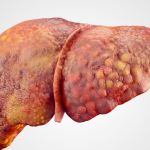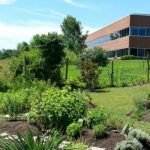Environmental Scan: Naturopathic Education, 2017-2018
David J. Schleich, PhD
Education
Effective environmental scanning takes time to prepare, and our various college and university administrators have less time for it than they’d like. They do their best to survey and interpret appropriate data to get the lowdown on what’s out there, on what can threaten us, and on what can make us stronger. And they take their findings to their colleagues for many reasons, including strategic planning.
Environmental scanners keep an eye on the economy, government policy, laws, and demographic factors influencing our applicant pools. They also take a close look at our competitors within our own community and externally. It’s complicated.
For starters, certain lenses are helpful for data conjugation:
- market perspective
- sustainability, diversity, inclusion
- institutional differentiation
- demonstrable value to our students, patients, and staff (employability skills, professional formation potential)
- consistent use of assessment metrics
- institutional flexibility (inter-institutional collaboration; cross-department resource sharing; agile systems and processes)
- financial viability
- consistent use of technological and operational innovations
- consistent value proposition creation and stewardship
A Sample Environmental Scan Snapshot
- Natural medicine is a tiny but necessary (and growing) piece of a massive healthcare market.
There are approximately 1.3 million MDs and DOs in the United States. This actively licensed physician population is growing, slightly aging, and with an increasing female to male ratio in the younger age-groups. The number of biomedicine physicians holding an osteopathic medical degree is also growing (28% in 2010-2016). There are 287 allopathic physicians per 100 000-population. As well, there are currently 136 073 NPs and 98 470 PAs in primary and subspecialty care in America. (IHS Inc, 2015)
ACTION RESPONSE: Collective establishment of key, sustained messages which associate the mission, programs, and graduates of our CNME-accredited schools with the known solutions to the global health crisis. This will encourage collaboration but also differentiate holistic and natural medicine from the biomedicine and allopathic sectors of the healthcare workforce.
- Allopathic/biomedicine is capturing and dominating the growth of integrative medicine.
In the PP-ACA healthcare landscape, society is mainstreaming “integrative and functional medicine.” The Academic Consortium for Integrative Medicine & Health now has over 75 members (academic institutions and health systems) focused on the tripartite service mission of education, research, and clinical services. Specialty certification is growing (eg, AIHM, NCIPH, OCCAM, NCCIH, Cochrane Complementary Medicine, and more), as are conferences, professional development, and mentorship activity. Added to this is the escalating number of established practices in integrative medicine while employing our graduates. These integrative medicine alliances and networks are targeting certain cohorts through aggressive platforms, such as the Institute for Functional Medicine and “Integrated Connections.” Significantly, the naturopathic and Chinese medicine professions have yet to consolidate professional identity, nationwide licensing, certification or registration, and are rarely recognized as “integrative” specialists. The allopathic professions are incorporating “holistic” modalities and practice into their biomedicine platforms.
ACTION RESPONSE: Continent-wide, improved branding, promotion, and practice-management training and support. Consistency in these areas builds confidence among graduates.
- External stakeholders recognize our schools as the voice for natural medicine (alliances are growing).
Response by employers, health systems, and multi-discipline clinics to the applied skills of our graduates is inextricably linked to presence in the healthcare workforce and healthcare services market. The “Integrative Medicine” market routinely attracts ND, DSOM/LAc graduates in licensed and unlicensed states. Professional “identity” is inconsistent and often lacking among the public.
ACTION RESPONSE: Continuously improving branding, promotion, and practice-management training and support, anchored by the sustained credibility of the philosophy and principles of natural medicine. The biomedicine paradigm is limited by ineffectiveness in countering chronicity and by its uncontrollable rising costs.
- New programs expand the profession’s access to the growth of integrative medicine.
The trajectory of program development in the university increasingly insinuates our graduates into the US healthcare workforce and policy agencies via service imbued with natural medicine modalities, principles, and products. Eg, Nutrition, Sports Medicine, Integrative Mental Health, and Expressive Arts programs, move our graduates and their skills into mainstream career options. When these natural medicine and related health-sciences career competencies are consistently aligned with the “healing power of nature,” NUNM’s presence in the higher education and health services sectors is strengthened.
ACTION RESPONSE: Consistent growth of not only our program mix, but also positioning and placement of our graduates in the delivery of healthcare services. Persistent collaboration with allied agencies who support access to natural and holistic health practices and who support accompanying research.
- The various naturopathic programs (either standalone or within multi-program institutions) are now financially stable; however, cash reserves remain small.
Our schools are catching up in terms of plant and property capital, human resources capital, diversified revenue streams (doubling of its program mix, enhanced delivery of educational and health products, fund-raising, health centers, continuing education, and publishing).
ACTION RESPONSE: Collectively structure the application of human and physical resources to enhance current and new revenue streams (significant scaling of programming in a variety of formats, new business enterprises, and sales volume). Strong, sustained effort in advancement work. Strong, sustained presence as a team player in the rollout of natural and holistic health providers in the workforce.
- The fixed costs of our various colleges and programs are still growing.
The juxtaposition of enhancing capacity (physical, intellectual, proprietary products, healthcare services) with rapidly-addressing debt ratio is a medium-term challenge for the university. The drivers of these increasing fixed costs are physical facilities, equipment, start-up, and personnel. The rate of increase of fixed costs will slow as efficiencies become possible through online scaling, more efficient utilization of personnel across the curriculum, strengthening managerial and leadership resources, and growth in participation in the mainstream of higher education and healthcare services.
ACTION RESPONSE: Structure the application of human and physical resources to grow traditional and new revenue streams; scale product delivery (academic and clinical); reduce fixed costs wherever possible with multi-year, contributed income. Increasing discretionary spending over time permits strategic positioning and long-term growth.
- The naturopathic programs around North America are, by and large, financially healthy.
Enrollment fluctuations will be straining their budgets this year and next; however, the field is stable and growing, and we must build a larger applicant pool as part of our ongoing strategy. The attraction of our core programs is strong when their nature and potential are known. Descriptors of natural medicine systems’ contribution to the healthcare delivery and effectiveness crisis must be reinforced by data and clear statements of value proposition.
ACTION RESPONSE: Laser-precise recruitment techniques, coupled with high-quality customer service, to secure growing shares of the available applicant pool. Skilled, student-focused retention techniques must accompany matriculation. This includes strong participation by students in career services offerings while in their programs and after graduation.
- A number of the colleges or universities that house our current programs are enhancing the fiscal and academic health of their respective institutions by diversifying their program mix.
New degrees and certificates that diversify some of the institutions housing ND programs can be synchronized with a service reputation for the professions these institutions serve. Each offering will have an ROI which is financial, philosophical, and brand-enhancing. Additionally, as we differentiate our credential-positioning locations in serving professions (eg, MBA in Integrative Health Administration), we strengthen the overall identity and brand of our naturopathic program.
ACTION RESPONSE: The institutions which house our programs will be more entrepreneurial and agile, responding with both immediate and long-term academic, research, and health delivery products addressing market conditions and trends.
- The physical resources of our programs remain highly utilized.
The need for more plant and property development to enhance learning space (classrooms, labs, clinics) is high.
ACTION RESPONSE: As the institutions housing ND programs expand their respective academic and physical footprints and improve their facilities, physical assets must be accompanied by technological progress, particularly in online presence. Fill-rates for physical space must contemplate evening, weekend, and low-season programming to optimize utilization. New facilities must be information-technology-rich.
- The ND programs in the AANMC-CNME network have a strong foundation and reputation to support growth.
The essential elements of protracted, secure growth are present and strengthening each year. Campus footprint (room to grow), physical assets (buildings, equipment, classroom, clinic configuration), human resources, programming with highly visible outcomes in a growing health workforce market, research capacity, capable and visionary leadership, a growing residential and online student body and participation in healthcare delivery in the integrative channel are all extant. There is reason to be excited about the future of naturopathic medical education programming.
ACTION RESPONSE: A consistent, coordinated, informed growth agenda will sustain morale, cash flow, and institutional unity as the AANMC program network continuously aligns to the needs of our students, patients, and inter-professional colleagues.
Summary
The naturopathic medical education environment is a complex arena indeed. Continuously updated scans of the elements and dimensions of what we do can help us to thrive in the highly competitive milieu of post-secondary and post-graduate education, coupled with patient care. Annual scans are powerful tools.
References:
IHS, Inc. The Complexities of Physician Supply and Demand: Projections from 2013 to 2025; Final Report. Prepared for the Association of American Medical Colleges. Washington, DC; 2015. Available at: https://www.aamc.org/download/426242/data/ihsreportdownload.pdf?cm_mmc=AAMC-_-ScientificAffairs-_-PDF-_-ihsreport. Accessed July 1, 2017.
Image Copyright: <a href=’https://www.123rf.com/profile_marish’>marish / 123RF Stock Photo</a>
 David J. Schleich, PhD, is president and CEO of the National University of Natural Medicine (NUNM), former president of Truestar Health, and former CEO and president of CCNM, where he served from 1996 to 2003. Previous posts have included appointments as vice president academic of Niagara College, and administrative and teaching positions at St. Lawrence College, Swinburne University (Australia) and the University of Alberta. His academic credentials have been earned from the University of Western Ontario (BA), the University of Alberta (MA), Queen’s University (BEd), and the University of Toronto (PhD).
David J. Schleich, PhD, is president and CEO of the National University of Natural Medicine (NUNM), former president of Truestar Health, and former CEO and president of CCNM, where he served from 1996 to 2003. Previous posts have included appointments as vice president academic of Niagara College, and administrative and teaching positions at St. Lawrence College, Swinburne University (Australia) and the University of Alberta. His academic credentials have been earned from the University of Western Ontario (BA), the University of Alberta (MA), Queen’s University (BEd), and the University of Toronto (PhD).









